If one doesn't have to be a chef to be a gourmet, does one need to be a garden designer to grow pretty edibles? Obviously not. Yet a few cues from a designer and plantsman might help make your potager that much more interesting. As a kid, I learned to combine different textures of foliage and match the subtlest hues in the potager: curly kale with waxy cauliflower seedlings, vapory fennel among coarse tomato plants and so on. Let's have a look at seven edible plants as yummy as they are pretty.
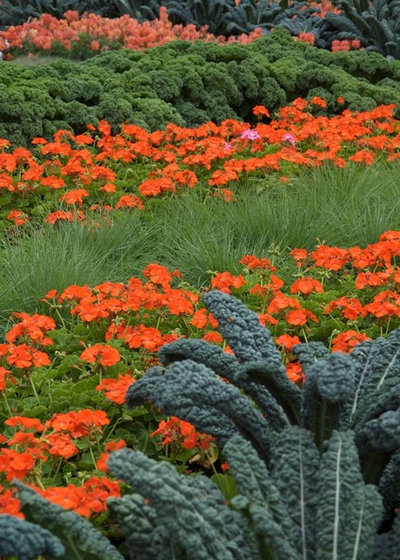
CYAN Horticulture
1. Kale. In this spectacular entry display at the Montreal Botanical Garden, perfectly grown kale is on par with fiery
pelargoniums and soon-to-bloom
fountain grasses. While some cultivars are tastier than others, kale is in most cases a high-drama foliage plant that's ideal for cool summers and fall displays — it even improves after frosts.
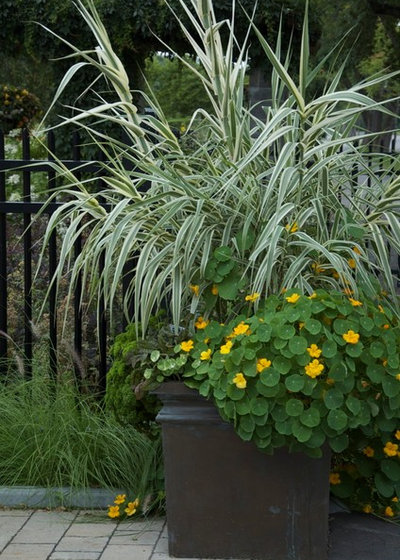
CYAN Horticulture
2. Nasturtium. Nobody would think of munching on this giant reed (
Arundo donax 'Versicolor', zone 7), however similar looking to sugarcane it may be.
The overflowing
nasturtium at its base, however, is as pretty as an annual as it is tasty when mixed fresh with other greens. Both the leaves and the flowers have a powerful peppery taste. Give it full sun, average soil — no soluble fertilizer, please — and just enough water to ensure beauty all summer long. At Giverny, Monet had it running almost wild.
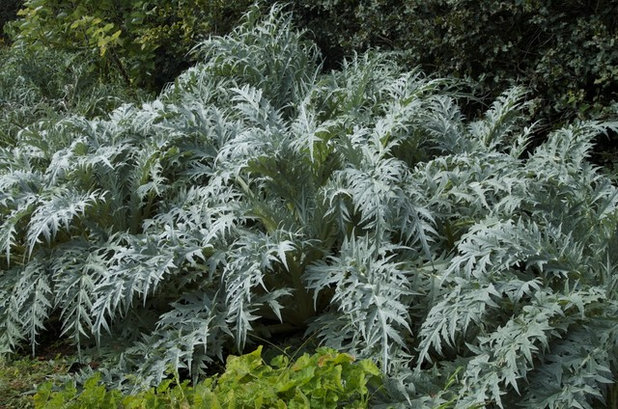
CYAN Horticulture
3. Cardoon. The stately artichoke (
Cynara scolymus, zone 6) would be a must-have plant in most gardens even without the promise of delicious flower heads. With its bold and generous silvery foliage, it makes for an architectural statement like no other.
Even better is its cousin, photographed here, the
cardoon (
Cynara cardunculus, zone 7). Its foliage stands out all summer and late into fall. Blanched, its leaf stalks are an old-world treat.
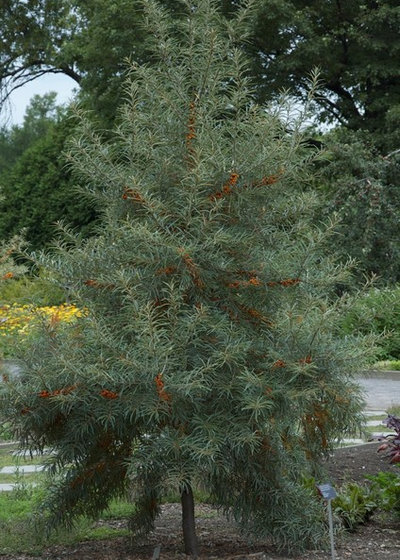
CYAN Horticulture
4. Common sea buckthorn (
Hippophae rhamnoides, zone 4) is in fact not that common, especially not in the realm of carrots and peas. But a handful of named Europeans selections have proven themselves for their greatly improved fruit yield.
Small and abundant, this tree's small, bright orange fruits make for exotic and superloaded juices, and they're ready early in summer. Fine and silvery, its deciduous foliage pleases too. To keep it to a decent size and shape, valiant gardeners do some annual formative pruning, as was perfectly done on this Montreal specimen.
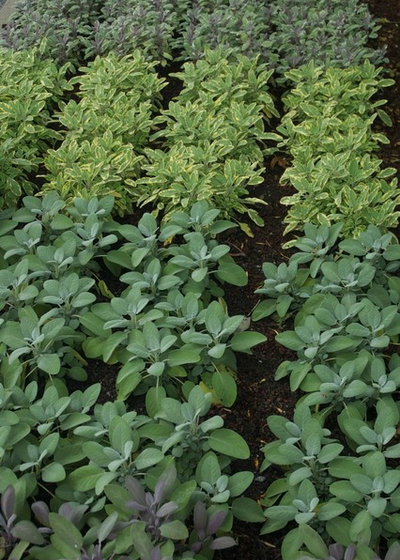
CYAN Horticulture
5. Herbs. They hopped over the fence long ago and have ventured profusely into flower beds and planters of all sorts. Purple-leaved
basil and golden
marjoram, spiky
chives and lacy
parsley now all brush up against petunias and bacopas. In this photo various
sages diligently form a strict grid, yet they could have just as well formed a low hedge border.
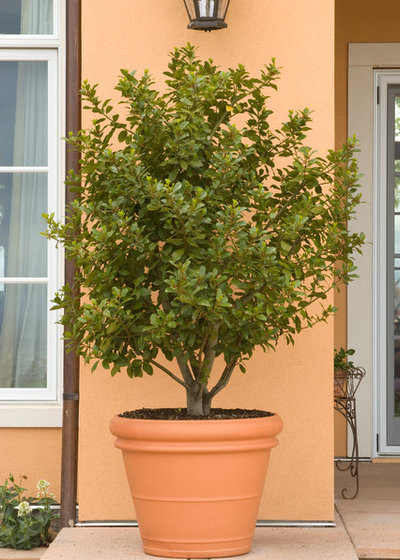
Monrovia
6. Bay laurel. Along with bean tepees and sculptural high blueberry bushes,
bay laurels (
Laurus nobilis, zone 8) help add structure and rhythm to the potager year-round. In milder climates they sit in the ground; in colder ones they sit in large tub thrones brought in for the winter. In balls, tiers or pyramids, bay laurels take to pruning like few other plants.
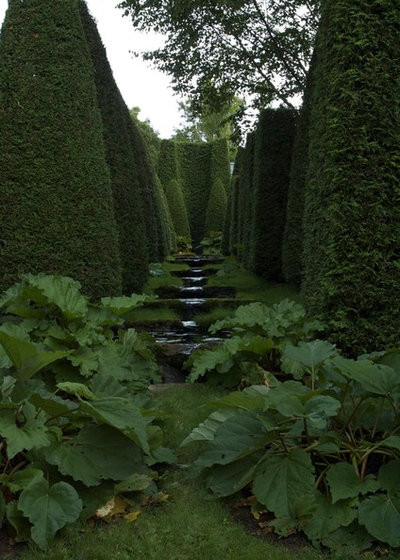
CYAN Horticulture
7. Rhubarb. As final proof of the cosmetic appeal of some of the simplest edibles, let's look at the famed garden Les Quatre Vents, in Charlevoix, Quebec. There, along an impressive succession of water basins flanked by a double alley of thujas, common rhubarb stands loud and proud. Pretty, isn't it?





